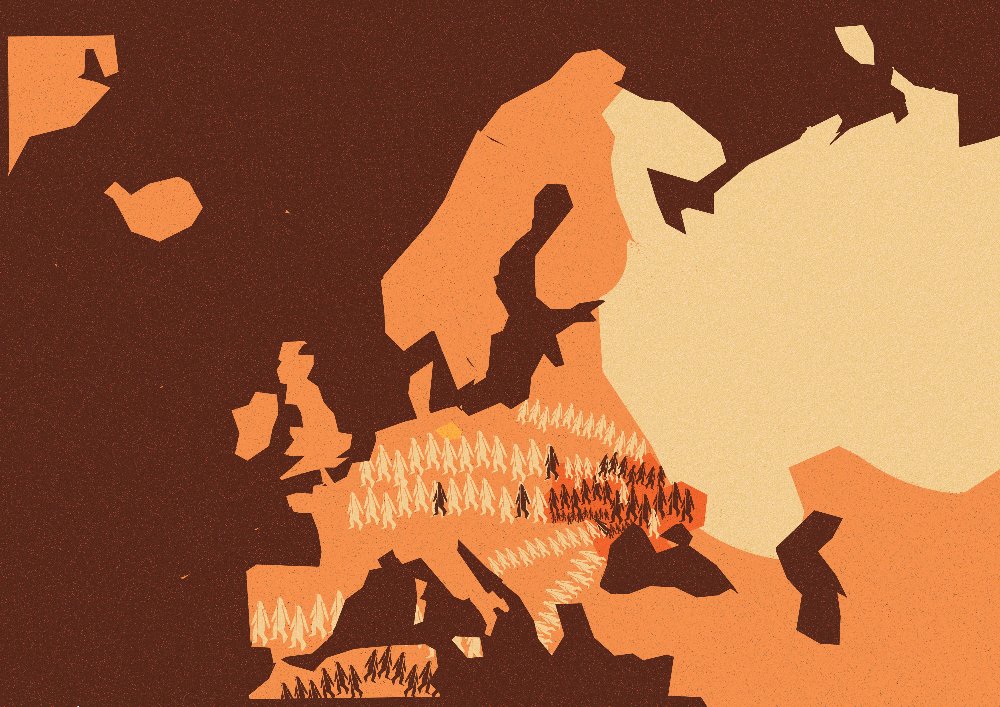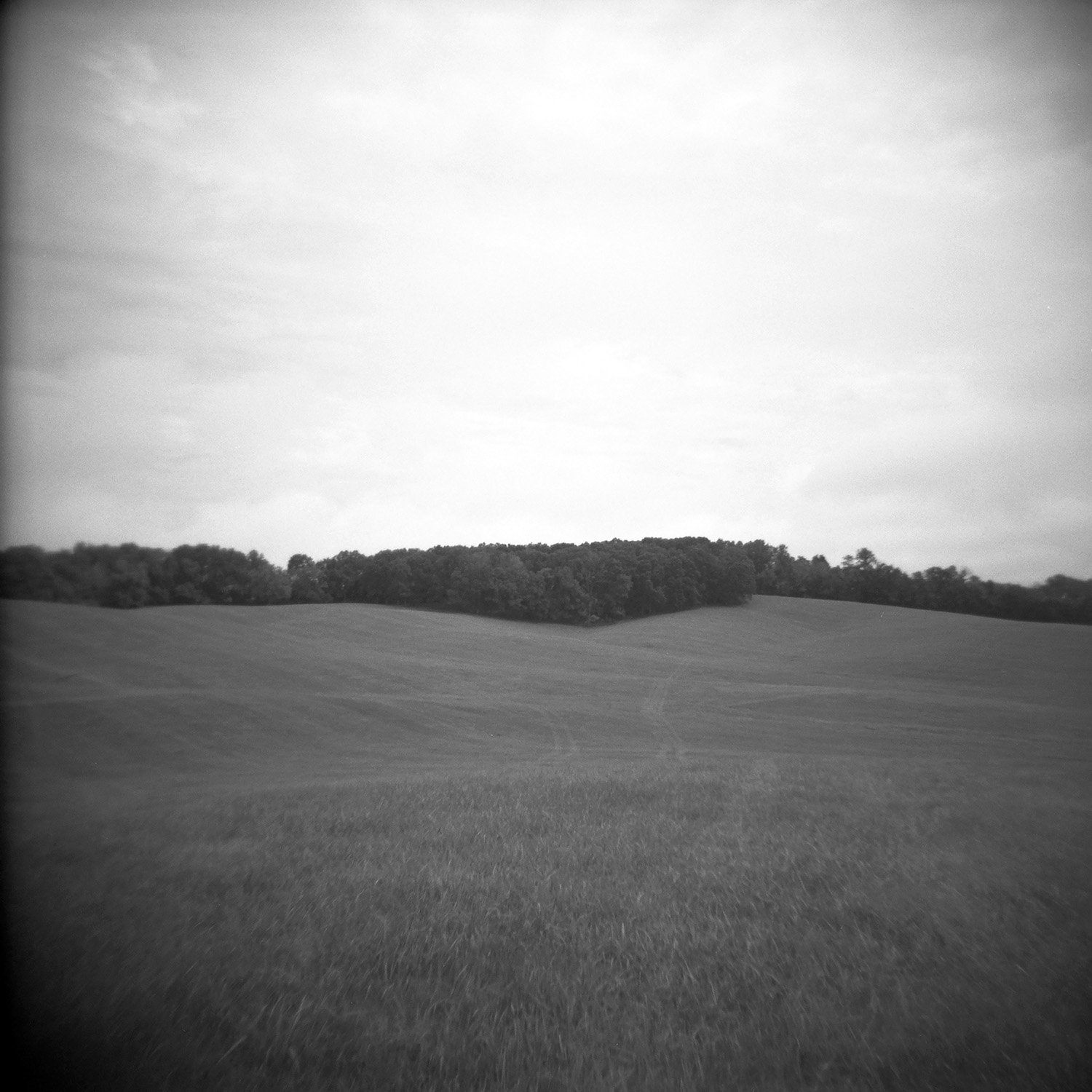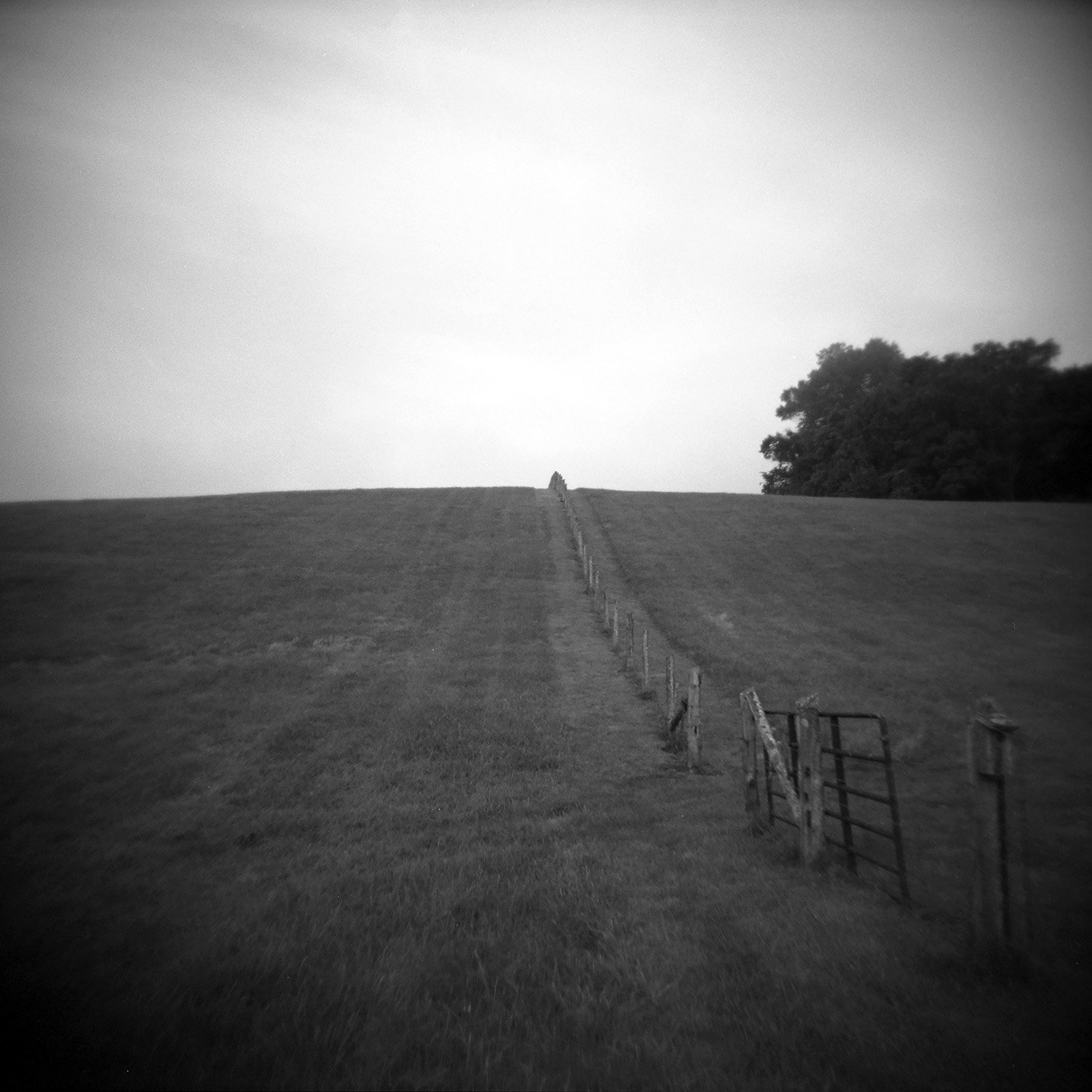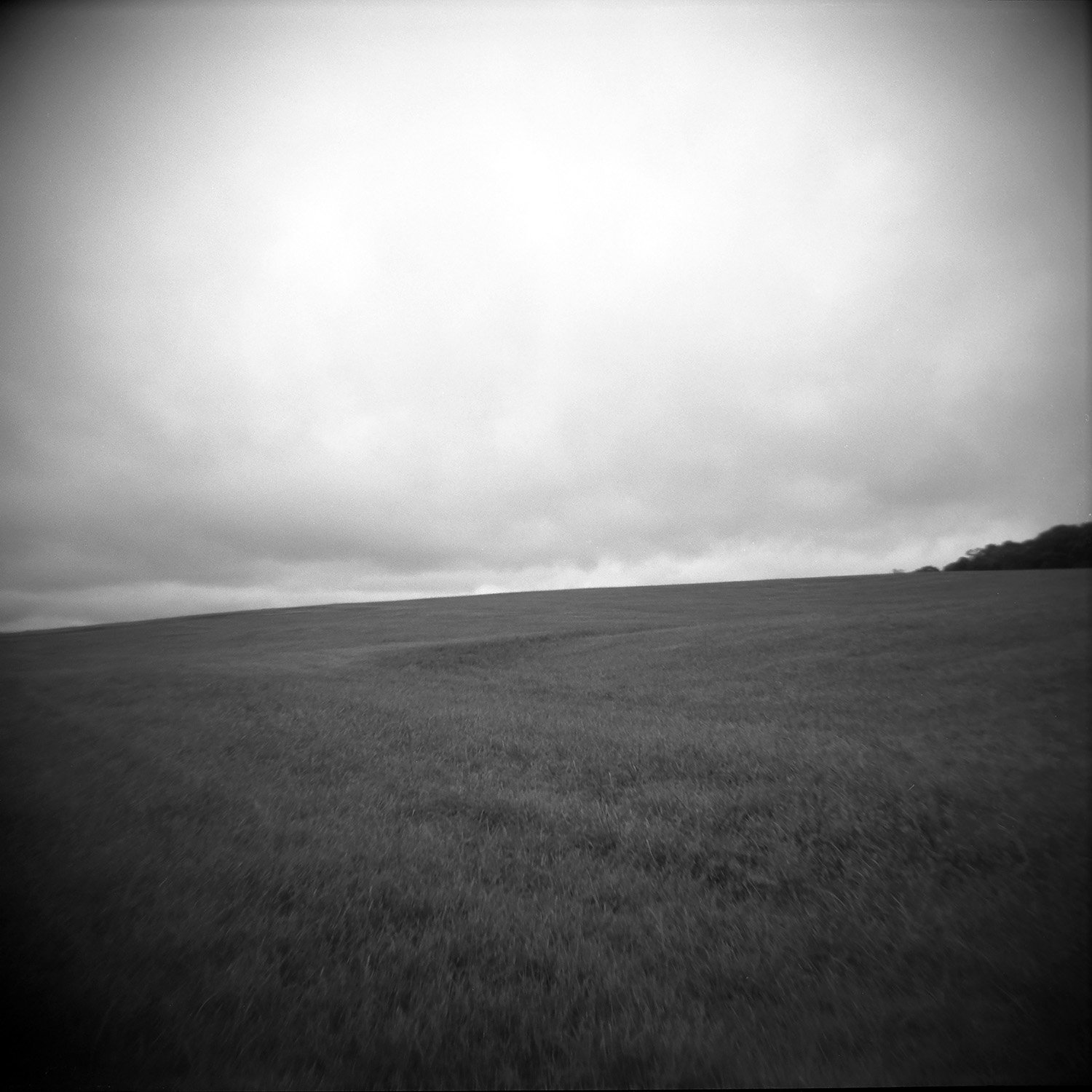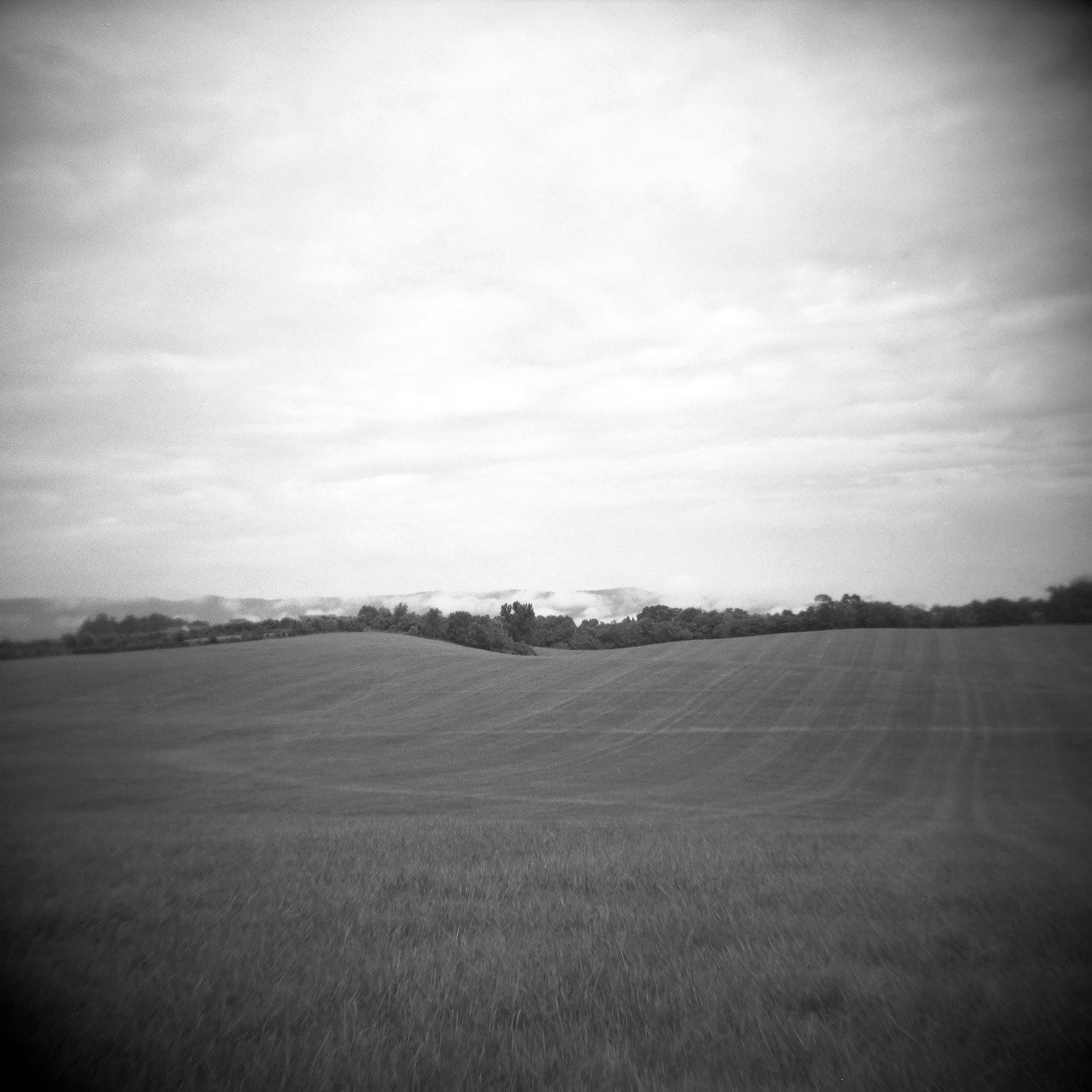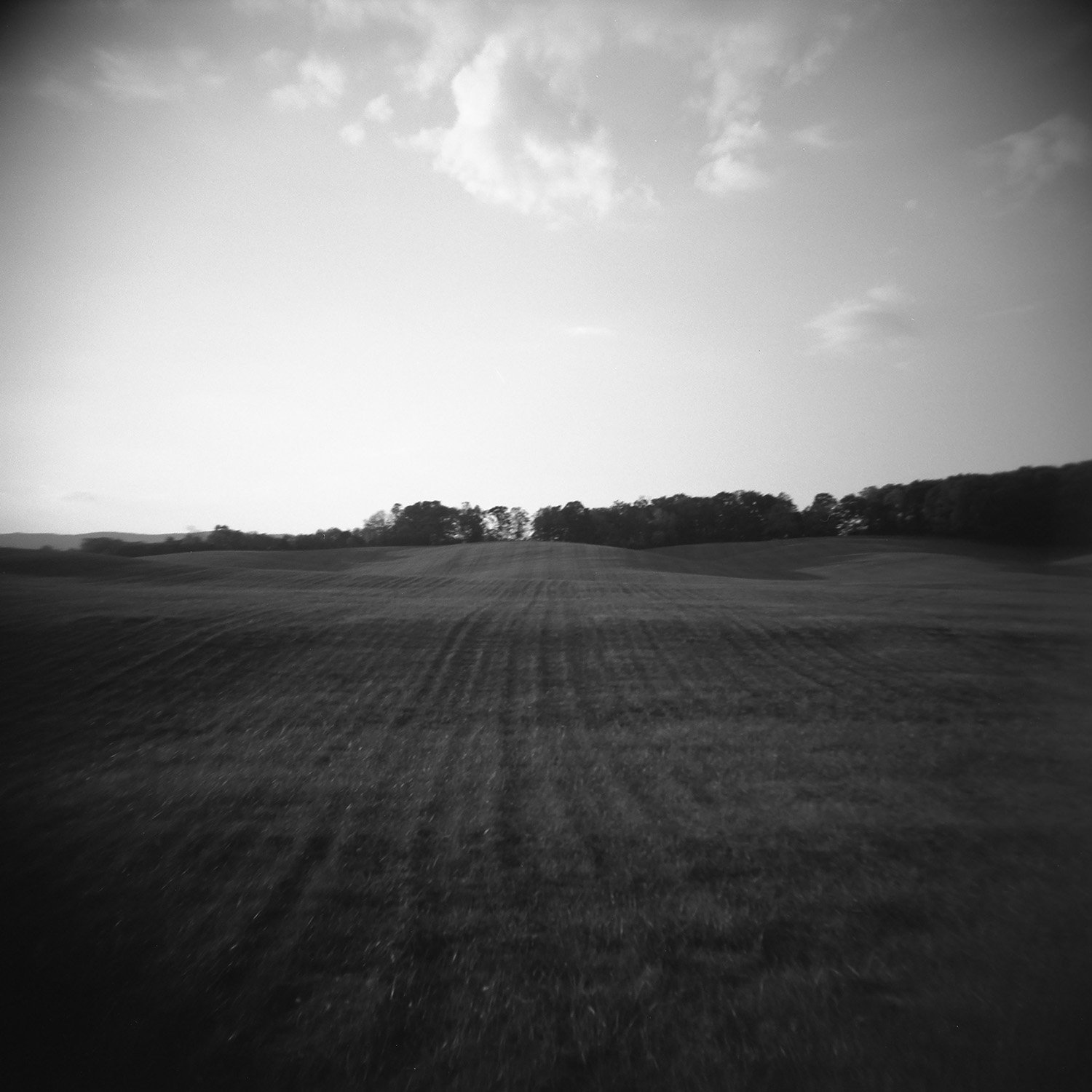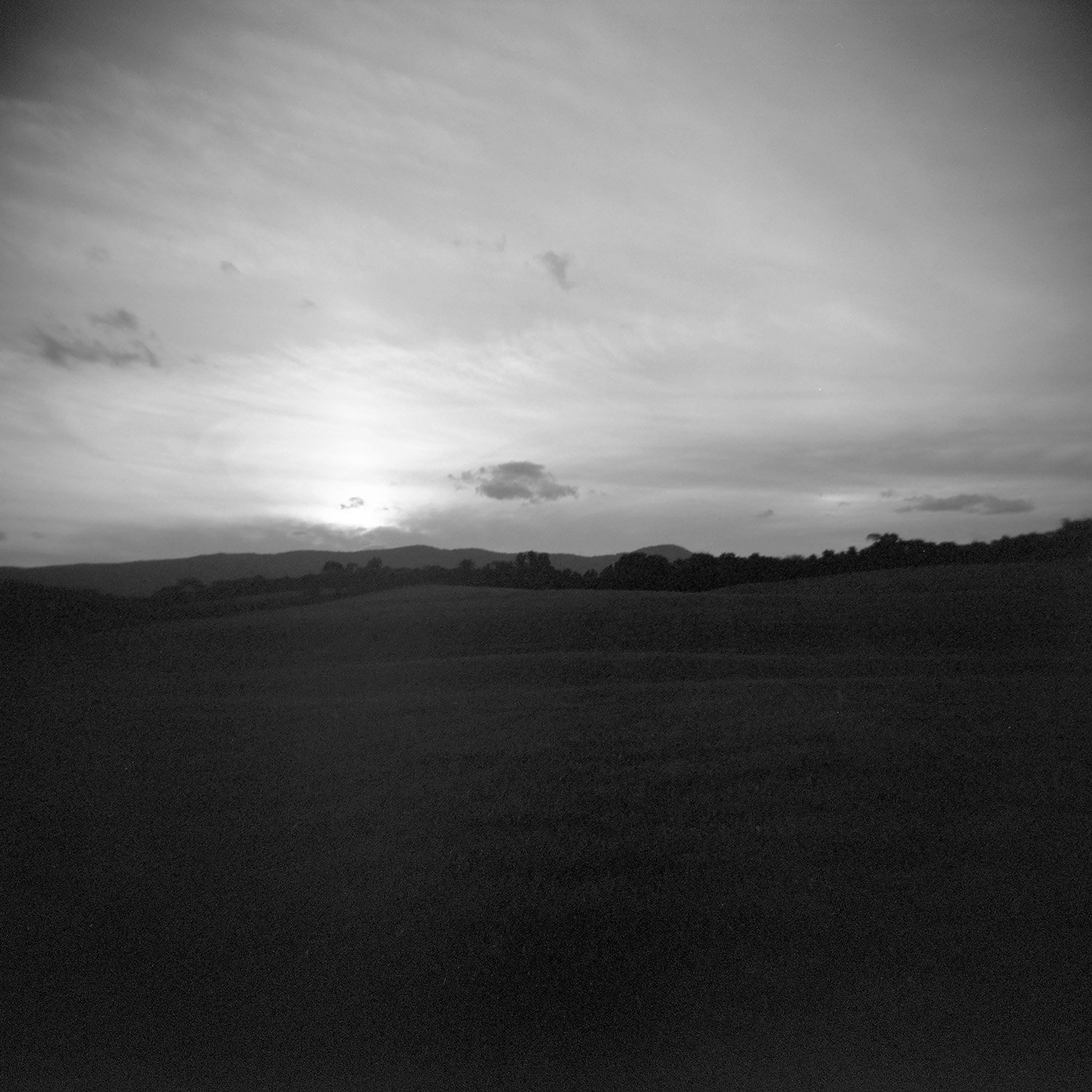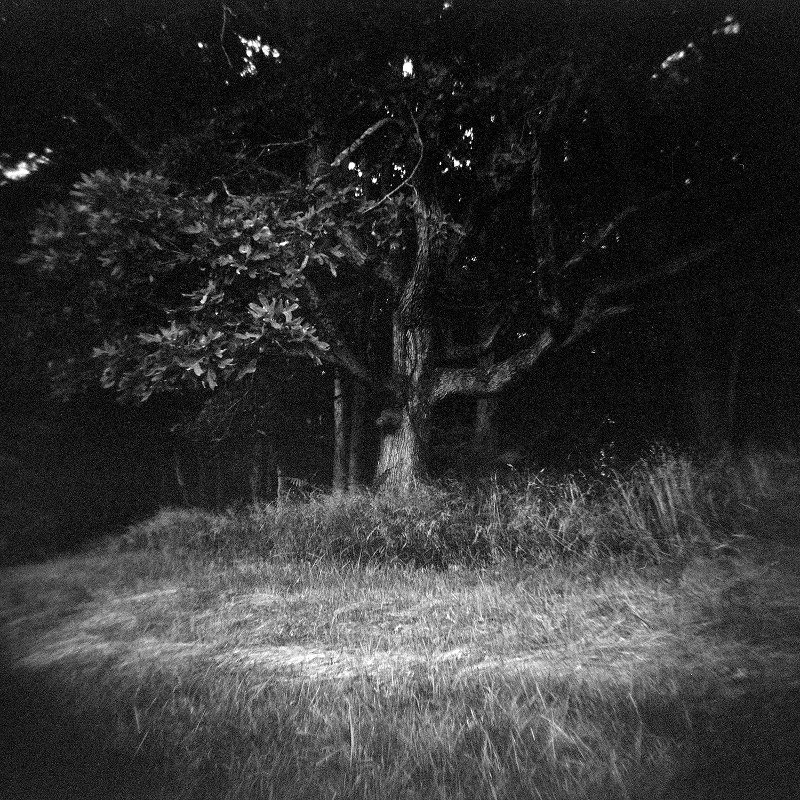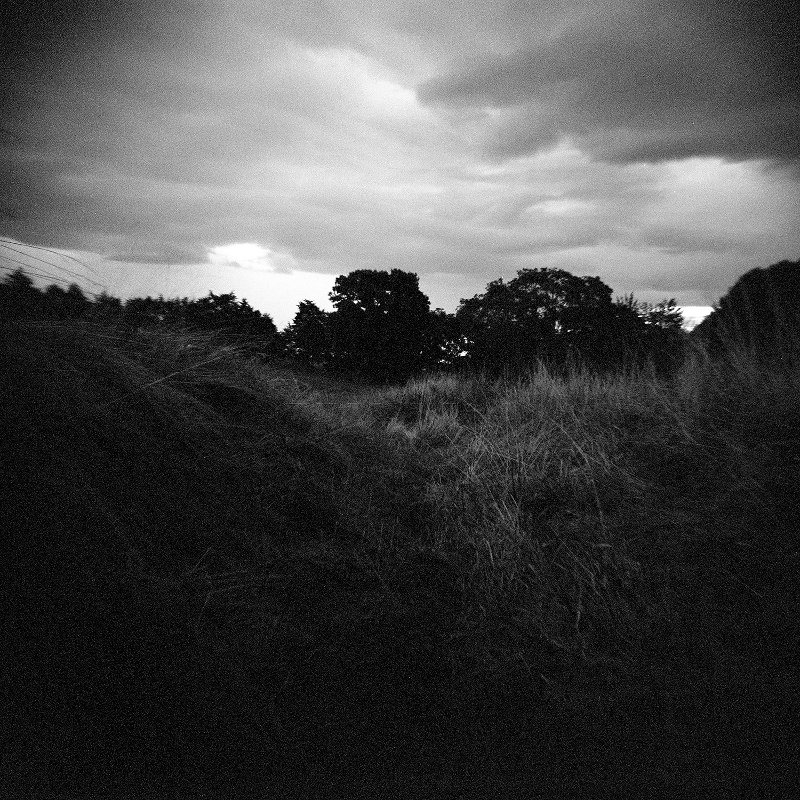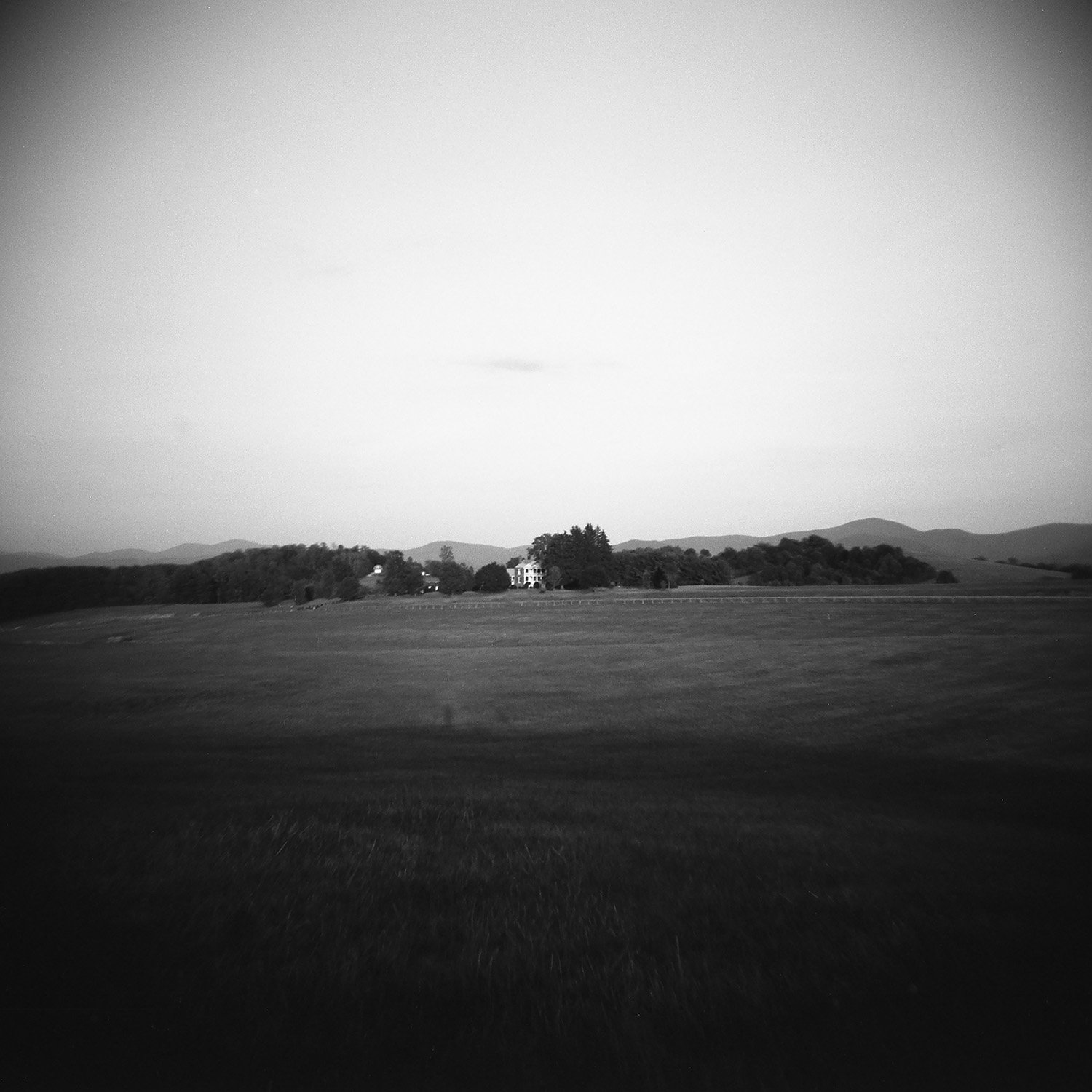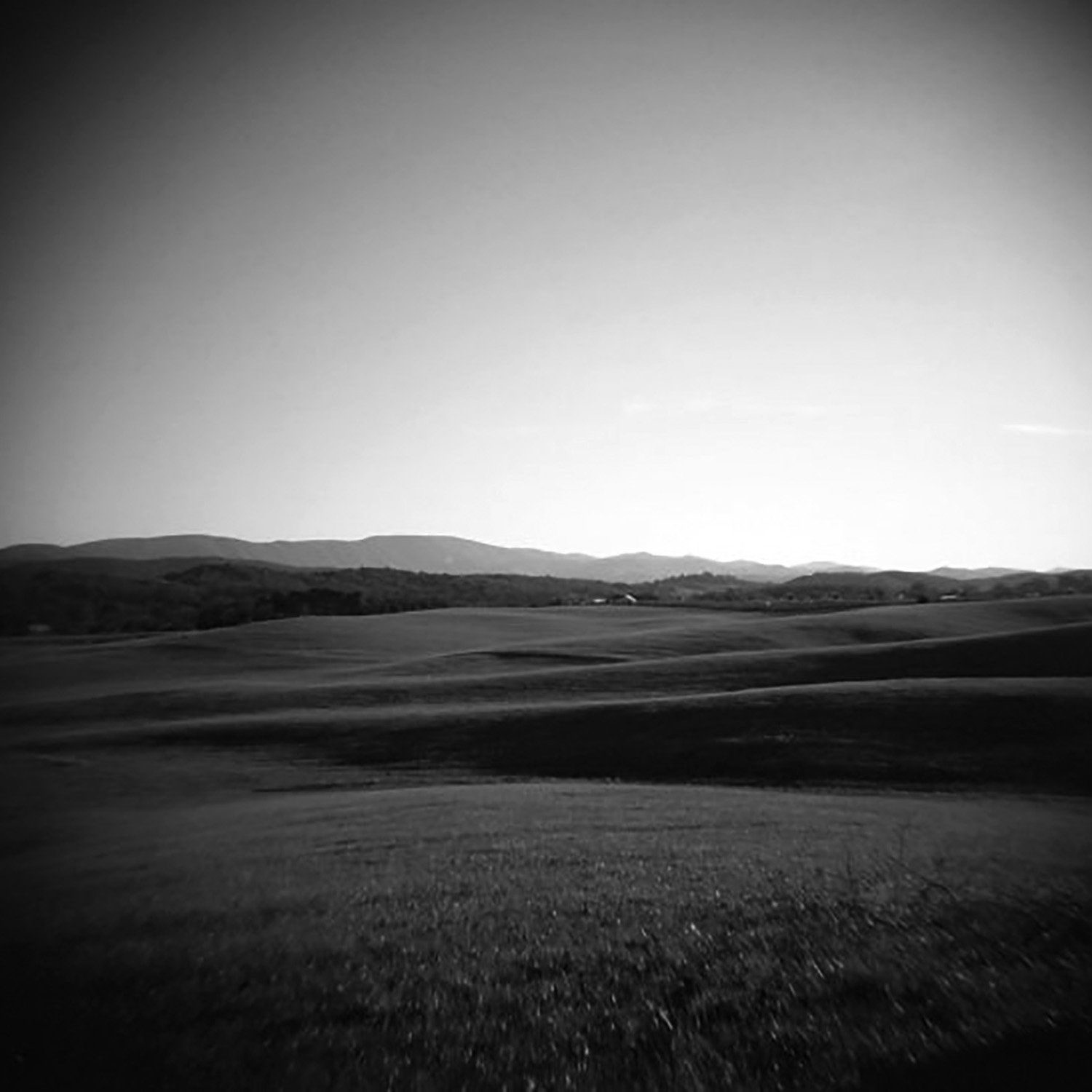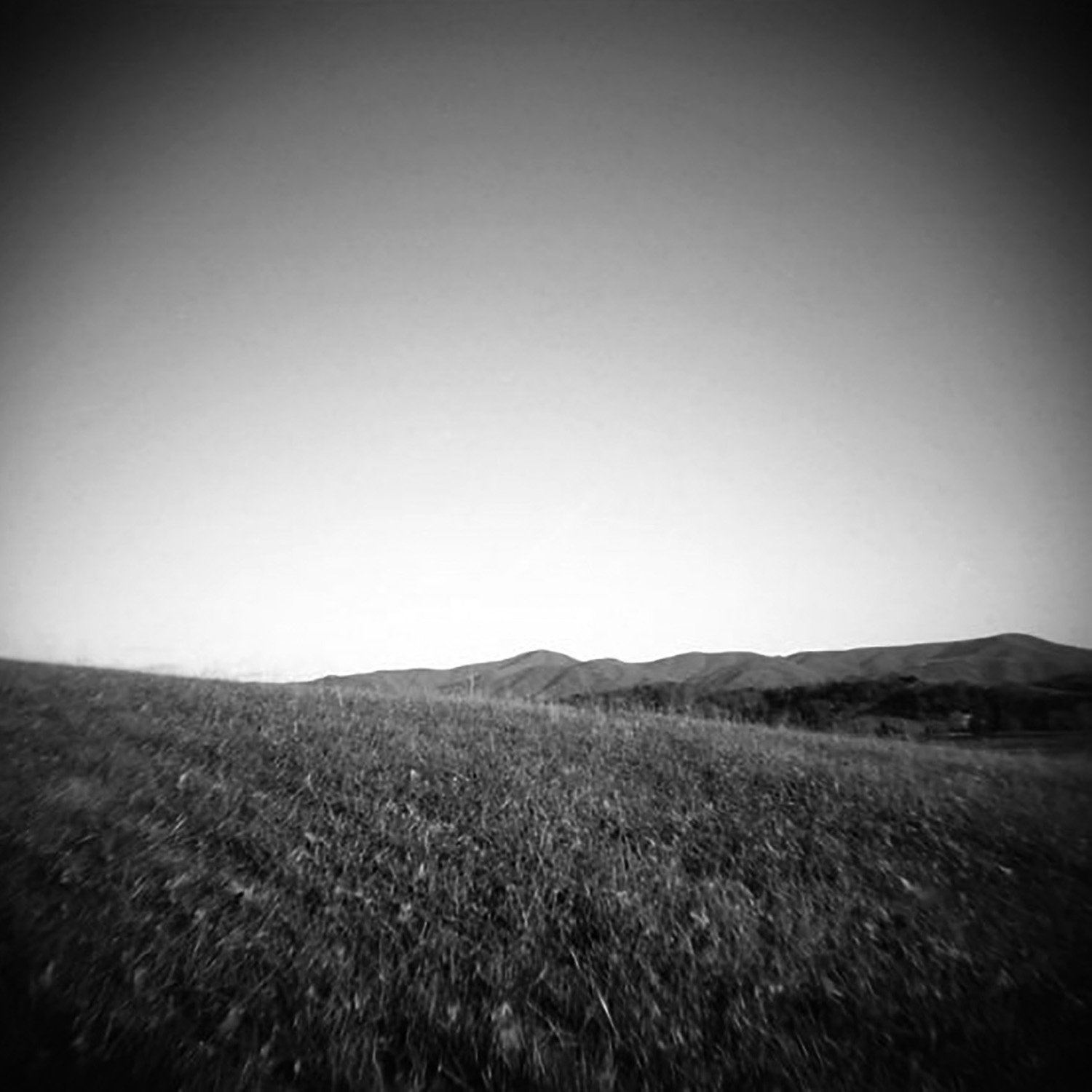This is the fourth in a series of portraits from our home city, of Berliners affected by the war in Ukraine. You can see all the portraits as we publish them here.
By Jacob Sweetman:
When we speak, a few days after Filippo Grandi, the head of the UNHCR, released a statement, confirming that “the ugly reality, that some Black and Brown people fleeing Ukraine – and other wars and conflicts around the world – have not received the same treatment as Ukrainian refugees”, Tahir Della is just off the phone to the Polish / Ukrainian border.
And though he is in good spirits, and flashes a brilliant, American toothed smile, his frustration still shines through.
Della says from his office in Kreuzberg that people on the ground are just “sick and tired of it now”. He says that there's no support, nor the political will to help people of colour in their time of need, as they try to flee from the Russian invasion. Or for the sleepless volunteers trying to help them.
They are sick and tired of still having to fight for something so basic, so fundamental. Sick and tired that a moment of solidarity across Europe in support of a people enduring the most terrifying and barbaric of situations, is still mired in the same old bullshit of different classifications being made for different people of different skin colours.
Such as the free train tickets offered to refugees. As long as they are European.
He knows all too well that, with grim inevitability, racism will always rear its malignant head in the worst of times, too.
Della and I talk about the Humboldt Forum, the grotesque reimagining of the Prussian Stadtschloss, filled with the fruits of colonialism. In there is a new exhibition, dedicated to Berlin, patting itself on the back for being modern and cool, daubed with “urban art”, which greets its visitors with a statement about how change in the world could be brought about 'holistically', when it ignores the fact that the system itself is at fault.
The system that put the exhibition together, that rebuilt the palace, the system that put a tiny piece in the corner about the German genocide in Namibia.
Though we can't call it that at all.
“It was horrible, everybody accepts that. It was wrong, against humanity...” he says. “But it wasn't a genocide. Because if it's a genocide you have to take care, responsibility. At least, you apologise for it, and you say, okay, what do the people or the country who have been impacted want from us?”
It's like he's in Catch 22.
“We have accepted for a long time that this happened, but we don't want to be responsible for it. We can do things, make announcements, we can sign petitions, just so we don't have to look at ourselves.”
But we come back to Ukraine again and again. It's an extension of the same fight he's been fighting for years.
Della says that he understands the closer proximity of Ukraine to Germany is a factor. He is German, he was born in Munich, of course he understands. So he's sick and tired, too, that the capacity of Europe to help refugees can be so malleable all of a sudden, when it was previously too stretched to help pluck children out of the Mediterranean to save them from drowning.
It goes on and on. He doesn't want less help for Ukrainians, it's not a game, he knows how many have died, how many are terrified for their lives there. He just wants the same amount of help for everyone. He's just had two Senegalese staying in his small flat, having come to Berlin before they can to France. Della speaks no French, and they no German, but it worked out okay, he says. They understood each other pretty well.
When Tahir Della was young his American Grandfather told him a story about his own uncle in Louisiana.
“He was a carpenter for a white company and he was waiting for almost two months to get paid. And when the money still didn't come he went to Baton Rouge to find out what was happening... and he never came back.”
He repeats himself, for even now the story is so tragic, its conclusion so callous, it doesn't make sense.
“He never came back.”
“Nobody knows still today what happened to him... and the thing that was really moving... or...” He pauses again, for there are really no words fitting to the feelings this brought up in the young Della, in either the English or German languages that he flits between with such a lightness of tongue.
“...there was no structure back then where black people could go and say 'we are missing somebody from our family'. There was no legal body who could go and investigate when somebody is just gone. And that's not even a hundred years ago, that was in the 40's of the last century.”
It wasn't the only story like that his Grandfather had. But that's why the older man was so proud when Della took his somehow inevitable place - with a spit-bucket and a gumshield and a towel in his hand, and a courageous streak a mile wide within him - in the corner of all the people of colour in his country.
Now, in his 60's, Della is still there in that corner.
He was on the board of the Initiative for Black People in Germany (ISD) til 2019 and is their spokesman. He's fought against the continuing riches reaped from colonialism, against double standards and hypocrisy, and against the racism inherent within the system itself, for more than half his life.
He joined the ISD in the eighties, a group of advocates and activists founded by the likes of the poet, writer and academic, May Ayim, of whose 'daily deflowahin a di spirit,' and
'evryday erowshan a di soul' the great dub poet Linton Kwesi Johnson wrote in his paean, 'Reggae Fi May Ayim'.
And now if you walk along the southern bank of the Spree - once the industrial heart of Berlin, crammed with warehouses and factories until it was bombed to the ground, which would then become transformed as clubs like Dimitri Hegemann's UFO sprung up just around the corner, playing techno, black music from Detroit - Underground Resistance, lest we forget! – you will now see Ayim's name, having replaced that of the original Gröbenufer.
Della says he knew Ayim for years. They were about the same age, they fought the same battles, but drifted apart as she withdrew into herself before her tragic death in 1996. But her role in the organisation was never forgotten, her soul never completely eroded even if her spirit grew deflowered. Della played a large role in the renaming of the river bank in her honour and he remembers fondly the day they could finally celebrate her immortalisation.
There were speeches and there was music and the sun was bright in the sky.
“It was a beautiful event,” he says, his sentence dripping with understatement.
He's not one to talk himself or his own efforts up. But the following lines from 'Reggae Fi May Ayim' - 'Tru all di learnin, Di teachin, Rizistin, An assistin, Di lovin, Di givin, Organizin, An difyin' - could have been written about him, too.
He's been doing all of these things since this war began, too. In the face of what he sees as mainstream apathy at best, of ignorance and intentional silence at worst. It's pretty simple, really.
Ever since his Grandfather told him that story about his murdered uncle, he felt he had little other choice.
Della has worked in theatres, he's driven a cab. Anything, really, he says, to pay the bills while he concentrates on the bigger things. But mostly he worked as a photographer. It was commercial stuff, he'd shoot for adverts, and he's quick to say that he has never considered himself an artist, that his view of the world is that of a political activist. But the two things almost certainly inform each other. He has to be able to view things with a certain detachment.
He has to be able to let neither his righteous anger nor his natural romanticism get in the way of his vision. He has to be able to explain soberly what he sees, so we can understand it better.
“We have a very small, narrowed narrow view on what racism is,” he says. “For many, racism is skinheads, Nazis, you know...”
He says that we think it is only about intent, but that this is an act of self-delusion.
“This is the same for the institutions. The police, they say they cant be racist because they are working according to the Grundgesetz. As many people say 'okay, you know, I have black friends though, how can I be racist?' Or, 'I live in Neukölln, you know...'
“This is really a problem, because as long as you can't identify or accept that there is a problem with racism, you are not coming to a point where you can deal with it. We have to listen to those who complain, who say they are afflicted by it on a daily basis.”
And now he is facing this new fight, a continuation of all the others that came before, certainly, but complicated by the fact that, though there are organisations similar to ISD in Poland and Ukraine, they are far less established, less significant, less well funded.
And let's be frank; Tahir Della is far from optimistic when it comes to the chances of Olaf Scholz's new government addressing the institutional racism that is affecting tens of thousands of people of colour fleeing the horrors of the war in Ukraine.
He laughs when I ask, spontaneous, loud and true. He makes it seem like such a stupid question.
It won't stop him trying to do what he can though.
“From the first day on after the beginning of the war it became clear that there was a big problem. I never had thought - honestly, I really didn't expect this. Because we didn't know. We are speaking of 70,000 people. 70,000 people of colour who don't dare to think 'what will happen with us?'
But even now, knowing everything he knows, everything he's learned in the face of this brutality and of the innocent people caught up in it, he still seems shocked.
“That,” he says, “I didn't expect that on such a scale.”
***
Jacob Sweetman is a writer and sports journalist, at home in Berlin. His work has appeared in 11Freunde, The Guardian, The Berliner Zeitung, Wisden amongst others. His writing about 1.FC Union Berlin can be mostly found here and he has a website here
Emily Sweetman is an illustrator, at home in Berlin. She is a genius, and her work can be seen here






